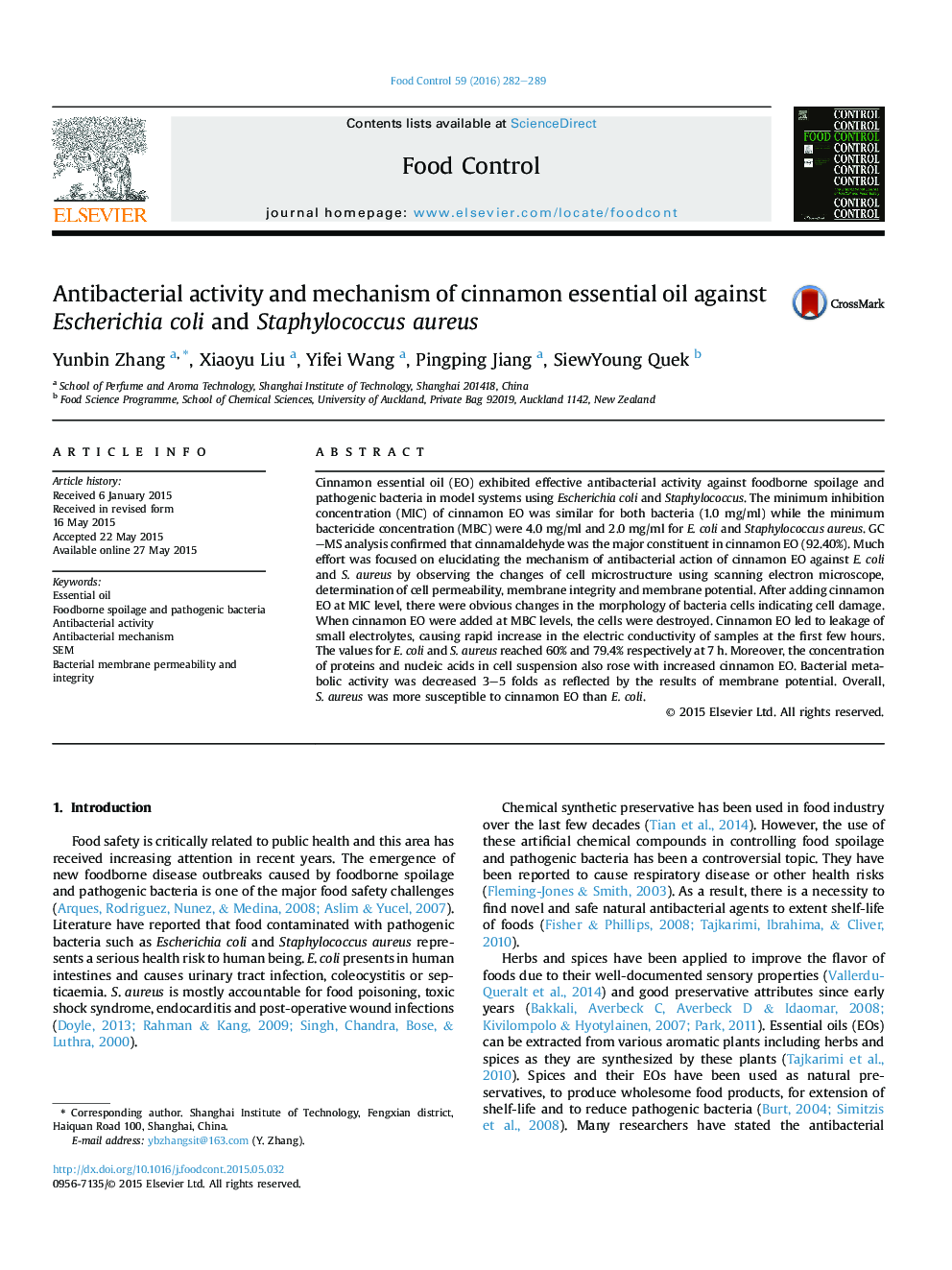| کد مقاله | کد نشریه | سال انتشار | مقاله انگلیسی | نسخه تمام متن |
|---|---|---|---|---|
| 6390561 | 1628403 | 2016 | 8 صفحه PDF | دانلود رایگان |
- We tested cinnamon EO exhibited effective antibacterial against Escherichia coli and Staphylococcus aureus.
- The mechanism relies on cinnamon EO effects cell membrane structure.
- Cinnamon EO results in irregular cell metabolic activity.
- Cinnamon EO changes membrane permeability and membrane integrity.
Cinnamon essential oil (EO) exhibited effective antibacterial activity against foodborne spoilage and pathogenic bacteria in model systems using Escherichia coli and Staphylococcus. The minimum inhibition concentration (MIC) of cinnamon EO was similar for both bacteria (1.0 mg/ml) while the minimum bactericide concentration (MBC) were 4.0 mg/ml and 2.0 mg/ml for E. coli and Staphylococcus aureus. GC-MS analysis confirmed that cinnamaldehyde was the major constituent in cinnamon EO (92.40%). Much effort was focused on elucidating the mechanism of antibacterial action of cinnamon EO against E. coli and S. aureus by observing the changes of cell microstructure using scanning electron microscope, determination of cell permeability, membrane integrity and membrane potential. After adding cinnamon EO at MIC level, there were obvious changes in the morphology of bacteria cells indicating cell damage. When cinnamon EO were added at MBC levels, the cells were destroyed. Cinnamon EO led to leakage of small electrolytes, causing rapid increase in the electric conductivity of samples at the first few hours. The values for E. coli and S. aureus reached 60% and 79.4% respectively at 7 h. Moreover, the concentration of proteins and nucleic acids in cell suspension also rose with increased cinnamon EO. Bacterial metabolic activity was decreased 3-5 folds as reflected by the results of membrane potential. Overall, S. aureus was more susceptible to cinnamon EO than E. coli.
Journal: Food Control - Volume 59, January 2016, Pages 282-289
